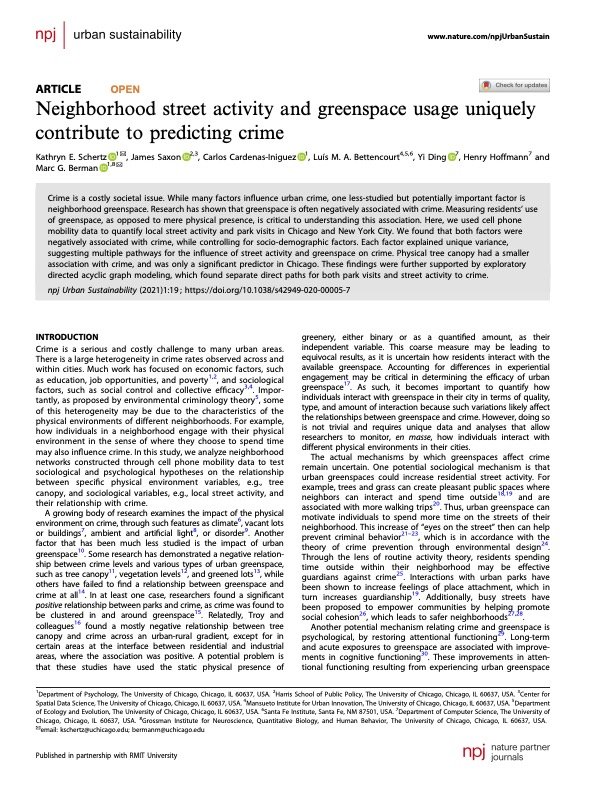By Kathryn E. Schertz, James Saxon, Carlos Cardenas-Iniguez, Luís M. A. Bettencourt, Yi Ding, Henry Hoffmann & Marc G. Berman
Crime is a costly societal issue. While many factors influence urban crime, one less-studied but potentially important factor is neighborhood greenspace. Research has shown that greenspace is often negatively associated with crime. Measuring residents’ use of greenspace, as opposed to mere physical presence, is critical to understanding this association. Here, we used cell phone mobility data to quantify local street activity and park visits in Chicago and New York City. We found that both factors were negatively associated with crime, while controlling for socio-demographic factors. Each factor explained unique variance, suggesting multiple pathways for the influence of street activity and greenspace on crime. Physical tree canopy had a smaller association with crime, and was only a significant predictor in Chicago. These findings were further supported by exploratory directed acyclic graph modeling, which found separate direct paths for both park visits and street activity to crime.
Urban Sustainability (2021) 1-19.



